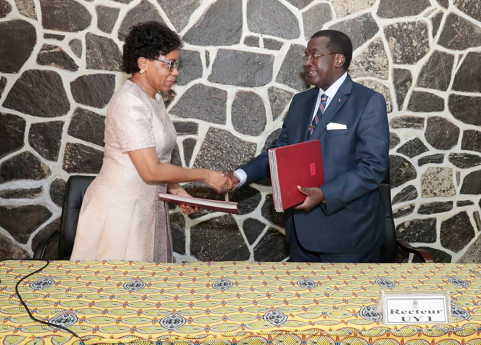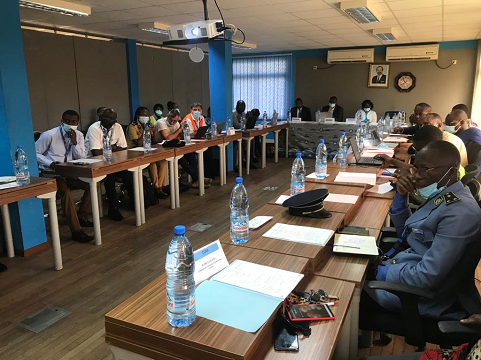The first "wing coups" in Africa and Cameroon
As early as November 1918, just when the First World War ended, Pierre Georges Latécoère, a French Businessman and industrialist imagined an airline from France to reach Spain. This was later to be extended to Morocco through the signing on the 10th of March 1919, of an agreement for the delivery of mail between Paris and Rabat. It was further extended to Casablanca.
In 1926, a line is established in Africa when the Latecomer Company opened a regular service between Casablanca and Dakar, in continuation of the Toulouse-Rabat service. This was the beginning of the French civil air lines. In April 1927. Pierre Georges Latecomer, plagued by material destructions and burdened by difficulties, sells 93% of his shares to Marcel Boulloux-Lafont, another French industrialist and financer based in Brazil, who creates the “Companies General Airports”, Three and a half years later, the Airport had 200 aircraft and 17 seaplanes, 1500 employees including 51 pilots amongst which was the famous aviator and novelist Antoine de Saint Expiry and his companion Guillaumat. This enabled him to build an impressive flight network across the African continent but in 1931 Aerospace was liquidated, largely because of the economic crisis that hit the world since then the stock market crash in New York in 1929. On October 31, 1933, Airport merged with other French airline companies to enable few months later the creation of Air France SA.
The armistice of 11 November 1918 marked the end of the First World War. It put Germany, deemed responsible for this murderous war, at the mercy of the victorious States who decided upon the fate of the German colonies. They were entrusted, under mandate of the League of Nations to France, the United Kingdom, Belgium, South Africa and Japan. Cameroon, former a German-control colony, was divided between France in the east and in the UK in its western part.
The means of transport used by the French metropolitan authority to reach its colonies was essentially the boat used by its officials, missionaries, teachers, soldiers, merchants and even adventurers amongst who could be counted the first loggers and mineral or hunters searching for a mineral abundant in the African subsoil. However, the importance of movement of passengers and goods (coIomes ...there is a word lacking here all these in paragraph; that regulating the overview of deserting regions, use A.O.F (French west Africa). and A.E.F (French equatorial Africa) registered by sea), did not stop in any way the exchange of correspondence between the Minister of Colonies and the Governors of the colonies by air. The activities of the Latecomer Company, the Companies General Airport, Air France S.A, attest to the immense development of air links between the metropolis and its colonies.
The International Convention on the regulation of Air Navigation signed in Paris on October 13, 1919, gave France the legitimate means of enforcing, regulatory requirements guaranteeing the safety of aircraft and others in its colonies. Three texts most especially contributed significantly: one on the registration and mortgaging of aircraft in the colonies; another one regulating flights over desert regions in A.O.F and A.E.F and the third on the Statute of the merchant aviation.
The case of Cameroon
The most reliable traces of the existence of civil aviation in the territory of Cameroon is the first known text on the existence of civil aviation in the Cameroonian territory which dates 25 June 1932. It regulated the over flight of the urban center of Douala. This text will be followed a few years later by Decree No. 381530 of 21 May 1938 on the establishment of border airports Batouri, Garoua; Yaoundé and Douala.
The creation of these first airfields on Cameroonian soil is accompanied by measures of protection in the interests of air navigation, the respective responsibilities of the Departments of the Air and colonies regarding radio- protection of air navigation to the colonies and regulation of the air-sanitation in Cameroon. From 1939 to 1945, World War II brought an extraordinary development of aviation, hence the need for a universal regulation to solve technical problems and standardize the methods and resources being used. The Chicago Conference in autumn 1944 led to the drafting of the International Convention on Civil Aviation signed on 7 December 1944.
France, one of the 55 member countries that participated in the elaboration of this convention, equally intended to use its federal power status to retain the advantages gained in air transport and try to get the freedoms of the air and free competition in its geographic area it controlled. Decree No. 47/1069 of 12 June 1947 relating to the operation of civil aviation services within the dependent territories of the French Ministry of Overseas France (notably its colonies) and the text of 5 May 1948 which determined the conditions of over flight rights in Africa are a perfect illustration. March 14, 1949, an advisory committee on matters of the air is created in Cameroon to address issues relating to public airfields which could be opened to air traffic. The outcomes of this measure are the airfields of; Foumban (1949), Kribi (1950), Bertoua, Maroua Salak city, Kaele, Ngaoundere (1952) and Eseka (1954).
At the same time while airfields were proliferated across the country, and while Air France monopolized international routes between Douala and the external world, on September 26, 1950, a dedicated domestic airline called "Régie Air Cameroon" was created to serve internal destinations within Cameroon. This company carried out operations even after the creation of Air Afrique in 1961 through to the birth of Cameroon Airlines by Law No. 7l / LF of 10 June 1971.
18 airfields in 1955
Already in 1955, Cameroon had 18 airfields in three categories: major airports (Douala and Yaoundé served by DC-6 type aircraft, Garoua, Ngaoundere and Maroua Salak receiving DC-4; then Batouri, a border airfield which received aircraft to and from Berberité in Ubangi-Shari, (now the Central African Republic) the airfields for light aircraft (Bafia, Bertoua, Djoum, Eseka, Maroua city Sangmélima, Tibati etc) and runways created by loggers to connect to factory plants they opened in the equatorial forest.
At the same time, aid to air navigation (Radio beacons at Mbanga -10 October 1953) were commissioned as well as aeronautical radio systems and weather stations which were found in most airports of the country were exploited till the first quarter of 1955 (the year of taking over of certain installations by the Aeronautique service.), by Posts and Telecommunications personnel. Before 1960, the year of political independence, Cameroon already had an important infrastructure to support both internal and external air service. Domestic traffic consisted not only of a irregular lines serving about ten airfields but charter flights as well, which accounted for much of the transport of air cargo.
In fact, airplanes did not only carry passengers and mail. The raw materials which were being supplied to western firms frequently used this channel. Aerodromes developed according to the type of cargo: Meat from Ngaoundere and Maroua, rice and onions from Yagoua, cotton from Kaele etc.
With the advent of independence, on January 1960, the administrative authorities of the young state pursued, with the help of Western advisers who continued to parade the corridors of national public services, the harmonization of texts inherited from colonization and monitoring the operations of airport infrastructure and airlines with more or less ease.











